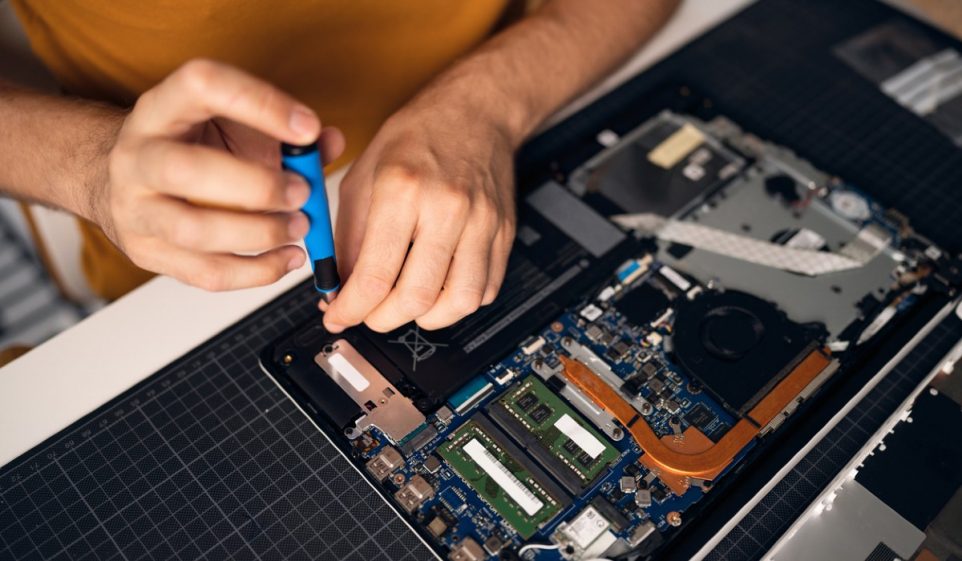Fix Your Computer Yourself and Save Some Cash – Here’s How

Are you fed up with spending a fortune on computer repair costs? If so, it might be time to learn how to fix your computer yourself. While this process may sound daunting and the thought of messing around inside your computer can be intimidating, it’s actually not as hard as you think.
In this post, we’ll share our best tips and tricks for diagnosing, repairing, and maintaining your computer. We’ll also help you figure out which tools and parts you’ll need to get your computer up and running again so you can save money on expensive repair costs. If you’re ready to take the plunge and become your own computer repair technician, keep reading to learn everything you need to know.
Setting up Your Computer
Gather the Necessary Supplies
The first step in repairing or upgrading your computer is to gather the necessary supplies. Depending on the complexity of the work you plan on doing, your list may vary slightly, but one of the most important items you will need is a computer repair set that includes specific tools for opening and maneuvering your system’s interior, replacement hardware components, an anti-static mat to protect your system from static electricity, a vacuum cleaner with a soft brush attachment, isopropyl alcohol, and lint-free cleaning cloths.
National Regulatory Standards
Before making any changes to your computer, it is important to become familiar with the national regulatory standards that apply to it. Many countries have their own regulations for the construction of computers and other electronic devices.
FCC registration
In the United States, a Federal Communications Commission (FCC) registration is required for all commercial electronic devices before they hit the market. To find out whether or not your computer needs an FCC registration, check for a mark on its label or contact the manufacturer.
UL certification
An Underwriters Laboratories (UL) certification is another standard many countries adopt for safety reasons associated with electrical products. Computers that have earned UL certification have been tested in terms of safety and reliability requirements set by the UL. Check your computer’s label for a UL certification logo or contact the manufacturer if you’re unsure about its status.
Back Up Important Data
If you plan on wiping your hard drive clean and installing an entirely new operating system or if you’re simply worried about losing data due to any errors that may occur during repair work, backing up important data is key. Data can be backed up on an external storage device such as a hard drive or flash drive or via cloud storage accessed through an account with a reliable provider like Dropbox or Google Drive.
Troubleshooting and Simple Repairs
Basic Cleaning
Basic cleaning should be conducted regularly, as dust buildup can cause overheating within your machine as well as affect its performance negatively over time. Carefully use a vacuum cleaner with a soft brush attachment or a compressed air can to remove dust from components such as graphics cards, fans, and heat sinks without causing damage or leaving residue behind on their surfaces. Then, use an isopropyl alcohol-dampened cloth followed by a lint-free cloth to clean plastic surfaces such as ports and connectors.
Inspecting Hardware Components
When solving certain issues related to hardware components, it is important to inspect each one separately for any signs of damage or wear such as missing screws, cracked or broken parts, loose connections, and excessive dust, among other things. Although repairing broken parts should be left to professionals, some simple fixes such as tightening loose screws or replacing old fans may solve issues with those respective components when done correctly.
Testing Network Connections
To check the functionality of your wired or wireless network connection, use either Windows’ built-in troubleshooter or specialized software such as IxChariot Network Stress Test. This will help determine if there are any problems between the network adapter in your machine and its source modem/router due to obstacles such as environmental factors (distance) or outdated drivers.
System Restore and Driver Updates
Oftentimes, if something has gone wrong with your system’s stability, that means driver updates are needed. In addition, it can be helpful to perform a System Restore process, which reverts back all settings to either a specified point in time or their factory defaults. Driver updates can be obtained from websites such as HP’s Support page, while instructions on how to restore systems can be found through research on support pages dedicated specifically to the operating system.
Your Trust, Our Core Commitment
At Rising Tech, earning and maintaining your trust is the cornerstone of our mission. We're dedicated to transparency, impartiality, and the relentless pursuit of truth in every article, review, and recommendation we publish. Our commitment to these principles ensures that you, our valued reader, are always equipped with reliable and unbiased information. Let us be your trusted guide in the ever-evolving world of technology.